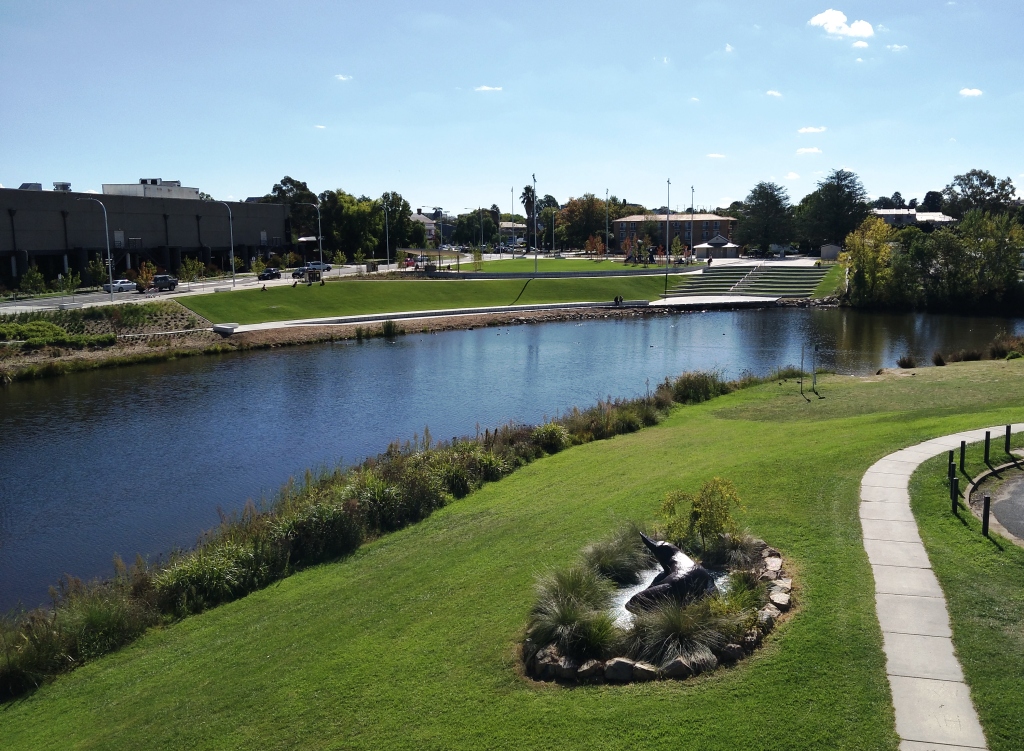Queanbeyan River

The Queanbeyan River is a perennial stream in the Australian Capital Territory and New South Wales’s Monaro and Capital Country districts. It is a member of the Murray-Darling basin’s Molonglo River catchment. It holds a profound cultural significance for the communities that have lived alongside its banks for generations. Beyond its ecological importance, the river serves as a living connection to the past, a source of inspiration, and a repository of stories, traditions, and rituals. In this exploration, we delve into why the Queanbeyan River is culturally important, unraveling the layers of history, identity, and meaning that flow through its waters.
Indigenous Custodianship:
For thousands of years, the Queanbeyan River has been a vital lifeline for Indigenous Australian communities, serving as both a physical and spiritual resource. The Ngunnawal and Ngambri peoples, among others, have deep connections to the river, which is woven into their cultural traditions, Dreaming stories, and customary practices.
The river’s waters provided sustenance in the form of fish, waterfowl, and plant resources, while its banks offered shelter, materials, and ceremonial spaces. Indigenous custodianship of the Queanbeyan River is reflected in the songs, dances, and oral histories that have been passed down through generations, preserving knowledge of the land and its significance.
European Settlement and Development:
With the arrival of European settlers in the 19th century, the cultural landscape of the Queanbeyan River underwent significant transformations. European exploration, colonization, and development brought new ways of life, values, and governance systems to the region, altering the relationship between people and the land.
European settlers established farms, towns, and industries along the river’s banks, shaping its physical and social environment. The river became a hub for transportation, trade, and social interaction, connecting rural communities to urban centers and markets.
Cultural Exchange and Adaptation:
As European settlement expanded, the cultural fabric of the Queanbeyan River Basin became increasingly diverse, reflecting the contributions of immigrants, refugees, and settlers from around the world. Cultural exchange and adaptation enriched the region’s social landscape, giving rise to a tapestry of traditions, languages, and cuisines.
Multicultural festivals, events, and celebrations along the Queanbeyan serve as expressions of cultural pride and unity, bringing together people from diverse backgrounds to share their heritage and stories. The river becomes a focal point for community cohesion, fostering understanding, respect, and appreciation for cultural diversity.
Environmental Stewardship and Conservation:
In recent decades, the Queanbeyan River has emerged as a symbol of environmental stewardship and conservation, with communities rallying to protect its natural and cultural heritage. Indigenous peoples, environmentalists, and community groups have advocated for the river’s protection, highlighting its importance as a cultural asset.
Efforts to restore riparian habitats, monitor water quality, and preserve cultural sites along the Queanbeyan reflect a growing recognition of the interconnectedness between cultural and ecological values. By safeguarding the river’s health and integrity, communities honor the legacies of those who came before and ensure its continued vitality for future generations.
Cultural Tourism and Education:
The cultural importance of the Queanbeyan River is also evident in its role as a destination for cultural tourism and education. Visitors flock to the region to learn about Indigenous heritage, colonial history, and environmental conservation, engaging in activities such as guided tours, interpretive walks, and cultural events.
Local museums, heritage sites, and interpretive centers along the Queanbeyan provide opportunities for immersive learning and storytelling, inviting visitors to connect with the land and its people on a deeper level. By sharing stories of the past and present, communities foster greater understanding and appreciation for the cultural richness of the river.
Conclusion:
As we reflect on why the Queanbeyan River is culturally important, we recognize its role as a living embodiment of history, identity, and resilience. From its Indigenous roots to its multicultural present, the river serves as a source of connection, inspiration, and renewal for all who encounter its waters.
Moving forward, it is essential that we continue to honor, celebrate, and protect the cultural heritage of the Queanbeyan. By embracing principles of reconciliation, cultural diversity, and environmental stewardship, we can ensure that the river remains a vibrant symbol of unity and belonging for generations to come.
Know More about the Queanbeyan River.
What are The Religious Places of the Queanbeyan River?
When Did The Queanbeyan River Basin Become a Focus?
Where is The Queanbeyan River Located?
Who Were The Key Historical Figures and Civilizations of The Queanbeyan River?
How to Reach Queanbeyan River?




